Вы здесь
Tour four corners of Asia.
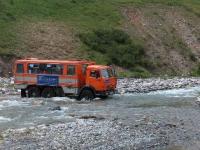
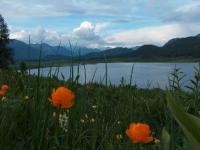
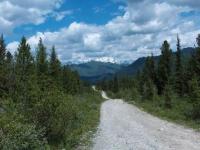
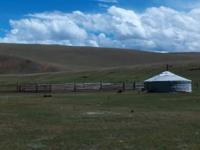
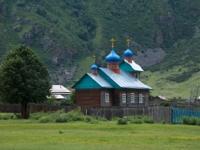
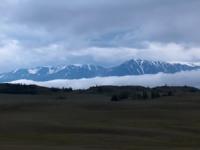

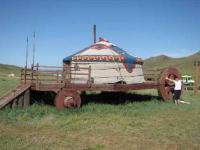
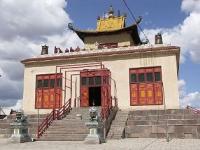
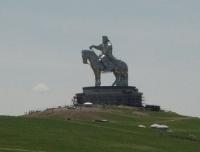
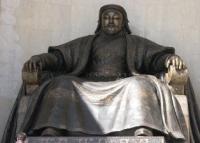
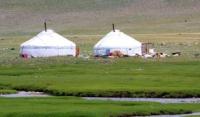
Tours from China to Kazakhstan, Russia and Mongolia - Trans-Altai Explorer.
“may came home with a smooth round stone as small as a world and as large as alone”
E.E. Cummings.
The short description of the tour route from China to Kazakhstan:
Urumqi - Yining – Naraty - Bayanbulak – Kuуtun - Karamay – Altay - Kanas lake – Burjin - Burjin - Jeminay – border of China/Kazakhstan - Markakol Lake - Yazevoe Lake - Katon- Karagai - Ust-Kamenogorsk - Semipalatinsk – Rubzovsk (Russia) - Barnaul - Biysk - Teletskoe Lake - Chuya River - Tashanta - cross Russian-Mongolian border - Tsagaan Nuur - Tsengel Khairkhan Mountain - Tolbo Lake - Ulgii - Naadam Festival - Ulan-Batar.
Distance route: 4203 km.
Season: 15 of June to 10 of September.
The best time for an tpur: Jyly, August.
Duration: 30 days, 29 nights.
The program day by day from Kazakhstan to Russia:
Tours from Zaisan lake to Markakol lake:
Day 1. Urumqi.
Arrive at Urumqi, the capital of Xinjiang Uighur Autonomous Region. Urumqi, a Mongolian name meaning "Beautiful Pasture", is seated at the foot of the soaring Tien Shan (Heavenly) Mountains, and is the capital of China's Xinjiang Uighur Autonomous Province. Both its people and its landscapes are variegated and diverse.
The slopes of 17,864-foot Bogdan Peak, bristling with spruce, give way to valleys lined with popular diat merge into die grasslands of the nomad, and finally transform themselves into desert. Nomads of Mongolian, Kazak and Uighur extraction have roamed here for thousands of years, and Han Chinese people began moving here in the first century AD. Upon our arrival, we will meet our local guide and transfer to our hotel. Dinner. Overnight. “Xingjian Grand” ****hotel.
Day 2. Urumqi - Yining – Naraty (50 km).
Breakfast. In the morning we board for a short flight, approximately 45 minutes to Yining, die center of the Hi Kazakh Autonomous Prefecture. This mm once a pan of the State of Wusun in the Han Dynasty, boasts a mild climate and is known as the garden of fruits. Yining is also famous for its hand made carpets and other woolen products.
We travel (280 km) thru the beautiful Hi valley by jeeps. Climbing out of the valley is a wonderful experience as all of a sudden you leave the hot -.lowlands, and are greeted by friendly beekeepers selling honey all around and' you find yourself already in the lush pine forest with many waterfalls around.
After crossing the pass we climb a bit further and reach the Naraty grassland, known as the Grassland in the Sky. You are now on the central plateau of die Chinese Tian Shan and this is one of four of the biggest Grasslands on die Eurasia Continent. Lunch and dinner. Overnight. “Naraty Holidayer” ** hotel.
Day 3. Naraty - Bayanbulak (90 km).
Breakfast. In the morning we turn south to Bayanbulak grasslands, the second largest grassland in China. It is rich with water, opulent grass and beautiful wild flowers with herds and yurts dotting the lands. Upon arrival in Bayanl ulak, visit the Swan Lake, the only nature reserve for swans in China's grassland areas.
The lake, which covers about 300 square kilometers of water space, consists of hundreds of small connecting ponds. Here springs, streams and snow water converge in the lake, to make it a perfect heaven for man}' swans of different species. Lunch and dinner. Overnight. “Yining Grand” Hotel or similar.
Day 4. Bayanbulak - Kuу Tun (260 km).
Breakfast. We depart Bayanbulak after an enjoyable visit of the Tianshan hinterland. We travel now north along the great Tianshan mountain valley caking in the beautiful scenery on our way. We arrive in the late afternoon to Kuytun, a small city located on the grassland route. Lunch and dinner. Overnight. Grassland Hotel or Wenquan hot spring paradise hotel.
Day 5. Kuytun – Karamay (290 km).
Breakfast. Today we drive to Karamay, a word meaning, "black oil". The city was named for the natural asphalt hill on the edge of town, and is an important oil production area in the Uighur Autonomous Province. Karamay has been producing oil since it was first discovered in 1955. Upon arrival, we will make a visit to "Well Number 1", which lies in the northeastern pan oi the city. Lunch and dinner. Overnight. Oil Field hotel or similar.
Day 6. Karamay - Altay (380 km).
Breakfast. Today we drive to Altay, die northernmost town in Xinjiang, close ю the border of Russia, Kazakhstan and Mongolia. Here one encounters a colorful mix of ethnic minorities including Mongols, Kazakhs and Kyrgyz inhabits.
On the way we visit che mysterious Devil City, made up of naturally occurring rock formations cal&cd yardangs. Yardangs ixz narrow, wind-eroded ridges, usually occurring in groups called "fleets" because rhey resemble overturned boats. Devil City is nyardang fleet with wind-carved ridges, turrets, promontories and humps.
When the wind blows through the rock formations, it howls and moans devilishly. Upon arrival and check in an afternoon tour will be done of the birch forest and ancient tombs. Lunch and dinner. Overnight in “Altay Tour” *** hotel.
Day 7. Altay - Kanas Lake (260 km).
Breakfast. The area's dismal road conditions will make the otherwise short stretch from Altay to Kanas Lake a long drive of about 4 hours. The drive is worth it, however, because of the exceptionally beautiful scenery of the region.
The thick evergreen Siberian forest consists of spruce, fir, larch and Wuzhen Pine, of which the latter two are native to this region in China. The seasonal changes of the forest make this a pleasant spot to visit all year around. After lunch, we will head to the north of the lake to the Fish Watching Pavilion on the peak of a 6,660-foot mountain.
The pavilion offers an unobstructed view of the entire lake, tiers upon tiers of peaks and glaciers, as well as the grand river valley. After descending the mountain, we will go speed boating along the 15-mile-long lake.
After dinner we visit a family of the Tuwa tribe, a branch of Mongolians known as "forest people" who live in this mountainous forest belt and make their living by hunting and herding. As they rarely communicate with the outside world, they almost completely hold onto their ancient tribal and spiritual beliefs. Here we will have a rare chance to experience their fascinating customs. Lunch and dinner. Overnighyt in “Kanas” ** Hotel.
Day 8. Kanas lake - Burjin (160 km).
Breakfast. We rise early to ride along the river valley and around the lake on horseback. The clear lake surrounded by a dense birch forest is set against a backdrop of towering peaks. A short distance away from the lake lies mirror-flat Moon Bay, named for is perfect shape.
The bay is dotted with small islets, and is a peaceful reserve ideal for spending the afternoon relaxing and stretching your legs. Later we drive to Burjin, a town mostly by Kazakh people. Lunch and dinner. Overnight in “Friendship Peak” ***** Hotel.
Day 9. Burjin - Jeminay – border of China/Kazakhstan (410 km).
Breakfast. Transfer: Check point “Maykapchagay” - Black Irtysh river - Buran village - Terekty village - Mramorny pass - Tikkabak pass - Urunkhaika village (Markakol Lake (410 km). After breakfast a short excursion the small and lovely town of Burjin, we diire to Jeminay and cross the border into Kazakhstan at Maikapshaghai.
Transfer: Check point “Maikapchaghai” - Black Irtysh river - Buran village - Terekty village - Mramorny pass - Tikkabak pass - Urunkhaika village (Markakol Lake (410 km). From here we will begin our overland journey over the Black Irtysh River, through the Kazakh segment of the Altai mountain range.
A frontier post greets us at the small village of Ashaly near Terekty village were we can see unique Kazakh and Chinese landscapes: The Kyzyl Kum desert sand dunes, up to 3000 feet high, bordering die forested Kazakh hills.
From Terekty village to Markakol Lake we drive 60 kilometers on unpaved mountain roads. From 4500-foot Mramorny Marble Pass we are rewarded with a beautiful panorama of the green valleys of Kazakhstan. Along the road we see tall larch, cedar and broad-leaved trees of the Altai taiga. Accommodation in tents on the shore of Markakol Lake. Lunch and dinner in the Base Tent Camp.
Day 10. Markakol Lake (Urunkhaika village).
Breakfast. After breakfast we begin by hiking around the Markakol Lake neighborhood. We ascend to the mountain south of Urunkhaika village; to take in the magnificent view of the lake and neighboring mountains. Next we make a short traverse along the ridge and descend to die eastern extremity of the lake.
We enjoy a picnic lunch along the way. After lunch we continue hiking along the northern shore of the lake until we come to the tourist center. We have traveled a distance of about two miles from our tent camp. Markakol Lake, at an altitude of 1467 feet, in Kazakh means "yearling lamb".
Situated in the basin between Azutau south ridge and Kurchum north ridge, Markakol is an alpine lake. There are two rare species of fish here; grayling and lenok. Lenok is very rare endemic fish and is only found in the lakes here and in Canada. A delicacy of local fishermen is lenok caviar. In the evening we have a chance to enjoy a Russian banya in a local bathhouse with steam and traditional birch branches. Lunch and dinner in Base Tent Camp.
Day 11. Markakol Lake - Uryl village - Berel village - Yazevoe Lake (120 km).
Breakfast. This is one of the most fascinating parts (120 km) of our exploration of the Kazakh Altai. We drive by 4WD vehicles a litde over nine miles of din roads, as we begin our ascent to Alataisky Pass. This Austrian road was believed to be built by Austrian prisoners during World War I.
From here we admire the wide river valleys, mountain plateaus and covered with cedar and larch. We cross two log bridges and we are at die top of the pass, with the majestic panorama of Altai ridge opening from here. We descend to the Zimovka Karakoba River. Once shepherds brought cattle here from' hot Zaisan deserts to die cool summer pastures. Deserted buildings of shepherds and wood cutters are here now. We stop for a picnic lunch.
Further on the road improves, and we soon ascend to the next pass, Burkhat. From here we may see the 14,000 plus-foot Belukha Mountain when the weather is fine. Descending from rhe pass we come our on die highway leads to Berel village with its log houses. In the afternoon we arrive at Rakhmanovskoye Lake, an alpine lake a well-known mineral springs resort. We overnight on the lakeshore in tents. Lunch and dinner in Base Tent Camp
Day 12. Yazevoe Lake - Rakhmanovskoye lake – Yazevoe Lake (40 km).
Breakfast. After breakfast we drive 40 km to Yazovaya village and on to Rakhmanovskoe Lake, at 5400 feet. On the way we visit a processing area for таral horns. Moral are the Kazakh version of the American Elk, or Wapiti. In this part of Kazakhstan, they grow quite large, and their horns are sought after by trophy hunters.
We cross the bridge over Belaya Berel river and come to exotic Yazovaye village. Here we stop to make the acquaintance of a local family. The name of the lake, village and river comes from the name of a fish that lives in the lake - die yaz. After lunch we take a walk to a nearby waterfall on the Yazovaya River. Dinner is back at our camp, where we spend the night. Lunch and dinner. Base Tent Camp.
Day 13. Yazevoe Lake - Dzhambul village - Chernovaya village - Katon-Karagai village (115 km).
Breakfast. Today we drive to the Naryn River, via die villages of Dzhambul, Chemovaya, Katon-Karagai. On die way we visit die Berel archaeological dig. This IV century ВС site includes 30 burial mounds of ancient Altai people, including an important leader, whose partial mummy remains. Today we also visit the exotic bazaar at Katon-Karagai village. Lunch and dinner. Base Tent Camp.
Day 14. Settlement Katon- Karagai - settlement Bolshenarym - Ust-Kamenogorsk (360 km).
Breakfast. We drive to Bolshenarymskoye village, die Bukhtarma reservoir and Ust-Kamenogorsk today, a trip of 155 miles. We pass many Altai villages making their livings from growing sunflowers. The Kazakh Altai is a first-rate producer of sunflower oil. We have lunch on the shore of beautiful Bukhtarma reservoit. This evening we arrive in Ust-Kamenogorsk. Check in our hotel to rest and shower. Lunch and dinner. “Irtysh” *** Hotel in Ust-Kamenogorsk.
Day 15. Ust-Kamenogorsk - Georgievka village – Semipalatinsk town (280 km).
Breakfast. After breakfast we head toward Semipalatinsk and our border crossing from Kazakhstan into the Russian Altai. We pass trough the village of Georgievka before we arrive in the town of Semipalatinsk. Upon arrival have an excursion around Semipalatinsk. We gather together this evening for a farewell to Kazakhstan dinner. Lunch. “Semey” hotel **
Day 16. Semipalatinsk – Rubzovsk (Russia).
Breakfast. After breakfast we depart to Semipalatinsk and drive to the Kazakh - Russian border crossing. We go thru die border formalities on both sides and inter into the Russian Altai and make our way to Rubzovsk. Here we spend the night and rest before the next days travels. Time permitting a short exploration of the town of Rubzovsk. Lunch and dinner.
Day 17. Rubtzovsk - Barnaul (298 km).
Breakfast. After breakfast we drive along the Aley River to the capital of Altai Region, Barnaul . Upon arrival in Barnaul we check into our hotel. If we want, we will have a walk in the city. Lunch and dinner. Overnight in “Barnaul” Hotel or similar.
Day 18. Barnaul - Biysk - Teletskoe Lake (420 km).
Breakfast. After breakfast we depart Barnaul and continue on to the city of Biysk. Upon arrival in Biysk, we tour to Biysk Ethnographic Museum. This museum contains fascinating displays on the lives of the Scythians and other native peoples of the region. Here we can see details of excavations of various kurgans throughout the region. Finally we drive on to Teletskoe Lake and check into the Zamok Lodge. Lunch and dinner. Overnight in Zamok Lodge.
Day 19. Teletskoe Lake
Breakfast. Today will be dedicated to the exploration around Teletskoe Lake. We will set out on the lake by boat taking in Stone Bay and the beautiful Korbu waterfall. Picnic lunch on the boat or along the way. Lunch and dinner. Zamok Lodge
Day 20. Teletskoe Lake - Chuya River (510 km).
Breakfast. After breakfast we come by coach to Chuya River valley which is about a 7 hour drive. Staying overnight on the bank of the Chuya River in a tent camp. Lunch and dinner. Overnight in Tent Camp.
Day 21. Chuya River.
Breakfast. After breakfast this morning we have rafting trip on the Chuya River. Passing the rapids “Burevestnik” and some others (Class 2-3). Passing the rapids “Begemot”- for whitewater enthusiasts (Class 4+). Sharing emotions and experiences. Passing the rapids “Classic”, “Slalomnyi” (Class 3-4). Transfer to rapid “Turbinnyi”. An excursion to petroglyphs (rock paintings). Passing the rapids “Turbinnyi”, “Gorizont” (Class 3-4) and the final cascade (6 km of rapids, Class 3). Return to tent camp by bus. Lunch and dinner. Overnight in Tent Camp.
Day 22. Chuya River - Tashanta (160 km) - cross Russian-Mongolian border - Tsagaan Nuur.
Breakfast. After breakfast we follow along the Chuya River to the border crossing of Tashanta into Mongolia. Here we depart die Russian Altai and enter die Mongolian Altai. We will meet out Mongolian jeeps and guide on the Mongolian side. Upon crossing the border into Bayan-Ulgii Province. Ninety percent of the population of Bayan-Ulgii is Kazakh and you will have ample opportunity to meet local families and experience the unique Kazakh culture. The isolated area has preserved the language, culture, and traditions of the Kazakhs and provides some of the most spectacular scenery in Mongolia. Drive to your camps site. Lunch and dinner. Overnight in gers (yurt camp).
Day 23. Tsengel Khairkhan Mountain.
Breakfast. After breakfast, drive to Tsengel Khairkhan Mountain and visit nearby Kazakh families with the chance to view local crafts. Kazakh women are renowned for their dolls in embroidery and applique and dieir gers are decorated in a dazzling mosaic of colors. Hand-crafted felt carpets line the floor, each design unique to a family, and delicately embroidered rapestries adorn the walls of their gers. In the afternoon, explore the slopes oi Tsengel Khairkhan Mountain, a peak reaching to just under 13,000 feet. Lunch and dinner. Overnight in gers (yurt camp).
Day 24. Tolbo Lake.
Breakfast. In the morning, drive to crystal-clear Tolbo Lake, mirrored by dramatic Altai peaks. Visit an Uriankhai family, a minority tribe of Mongolia which speaks a different dialect than Khaikha Mongolian. The ancient traditions of Uriankhai are well preserved and the families are diligent about following the old ways. Attend an archery exhibit and learn how the families make formidable compound bows which, with dieir advanced design, were a significant asset to Chinggis Khan and his descendants during their years of conquest. After a dinner drive to Ulgii town for overnight. Lunch and dinner. Overnight in local hotel “Tavan Bogd Hotel” .
Day 25. Tolbo Lake.
Breakfast. Spend this day exploting the surrounding area and flora and fauna. You will have the opportunity to visit Kazakh families. Passed down from their Turkic ancestors, many Kazakhs still hunt with trained Golden Eagles in the winter months. Female eagles are preferred since they are believed to be more aggressive and weigh as much as fifteen pounds (nearly one-third more than the males). During our travels, we will have the chance to see these magnificent birds, whose vision is eight times more acute than humans. Enjoy some traditional Kazakh music in the evening. Lunch and dinner. Overnight in gers.
Day 26. Ulgii - Naadam Festival.
Breakfast. In the morning, drive to Ulgii, -the capital of Ulgii province ro observe the Naadam games. Naadam Festival is the largest holiday in Mongolia and is celebrated throughout Mongols in July. The Festival is consisted of "three manly sports", namely the horse racing, wrestling and archery but women compete in two of them. Lunch and dinner. Overnight in gers.
Day 27. Naadam in Ulgii.
Breakfast. Continue observing games of the Festival. There will be plenty of photo opportunities and chances to meet with local Kazakhs. Lunch and dinner. Overnight in gers.
Day 28. Ulgii – Ulaanbaatar.
Breakfast. After breakfast, visit a local mosque and History Museum. Transfer to the airport for your returning flight to Ulaanbaatar. Upon arrival, transfer to your hotel. Time allowing, enjoy dinner at De La Casa Restaurant. Overnight at hotel “Mongoliya”.
Day 29. Ulaanbaatar.
Breakfast. Begin the day with a visit to Gandan Monastery, the seat of Buddhism in Mongolia. Woven through Mongolia's nomadic culture is a rich Tibetan-Buddhist tradition with ancient Shamanist practices still evident. Although Buddhist monasteries were either destroyed or converted into museums during the Stalinist purges of the 1930s, Gandan Monastery continued to operate as a "showpiece" for government officials.
However, in spite of the government's efforts to suppress Buddhism and other religious beliefs, Mongolia's spirituality persisted and a significant resurgence of Buddhism began in 1990 when Mongolia became a democracy. Monasteries across the country яте again opening their doors to worshippers and the few lamas who survived the purges are training a new generation. Massive reconstruction and renovation projects are underway and priceless artifacts that were hidden for safekeeping are now being returned to monasteries by nomadic families.
Experience these exciting developments firsr-hand at Gandan Monastery. Strolling through the monastery grounds, you will hear the low tones of the horns used to call the lamas to the temple and can observe their daily rituals, including the reading of surras (teachings of the Buddha). Also visit the reconstruction and renovation projects of the Chenrezi and Kalachakra Temples, as well as the magnificent statue of Migjid Janraisig ("rhe lord who looks in every direction").
This 82-foot high statue, gilded in pure gold and clothed with silk and precious stones, completely fills one of Gandan's temples. Next, travel back in time with a visit to the dinosaur halls of the Natural History Museum, showcasing the spectacular fossils found in the Gobi desert.
On display are fierce Tarbosaurus fossils (closely related to Tyrannosaurus Rex), dinosaur eggs, large Hadrosaur fossils (duck-billed dinosaurs), and many others, all of which illustrate the richness and importance of the pakontological sites in the Gobi desert.
Next, visit a cashmere factory store for the opportunity to purchase their exquisite goods. After lunch, visit the Zanabazar Fine Arts Museum, Named in honor of Zanabazar, the first Buddhist leader of Mongolia and renowned sculptor, artist and politician from the 17* century, the museum contains one of the best collections of Buddhist an and artifacts in the world, including many of Zanabazar's original works.
The remainder of the day is free for individual sightseeing and the shopping. In the evening, enjoy a performance featuring traditional Mongolian dancers and hoomi (throat) singers followed by a farewell dinner at Seoul restaurant sampling Korean and Mongolian dishes. Lunch and dinner. Overnight in the hotel “Mongoliya”.
Day 30. Departure.
Breakfast. After breakfast, transfer to the airport for departure.
Photos by
Alexander Petrov.







